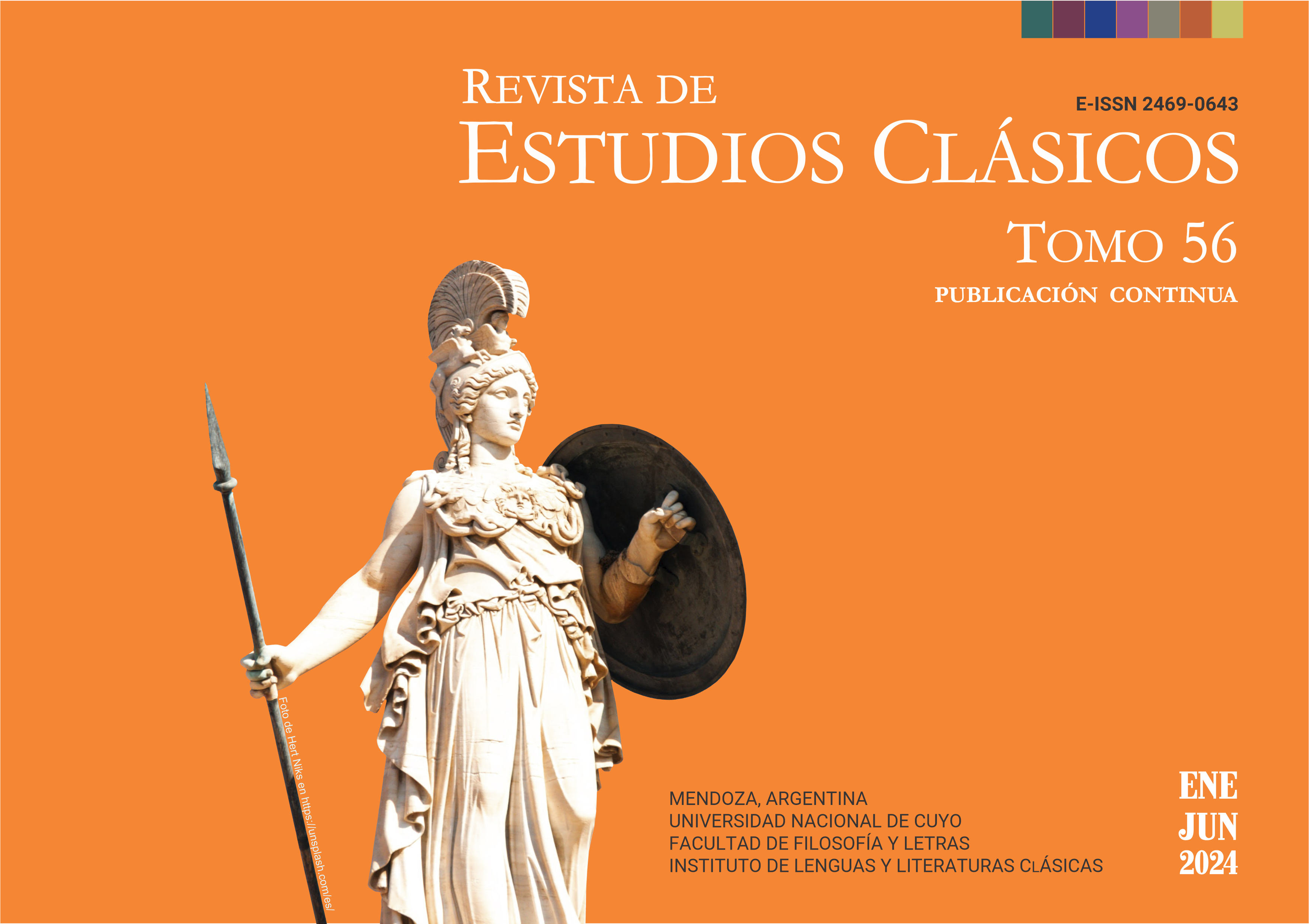The figure of Paris in Lykophron´s Alexandra
Keywords:
Alexandra, greeks, Lykophron, Paris, trojansAbstract
Alexandra narrates the events of the Trojan War from the Trojan perspective of Cassandra. From this, Lykophron builds a dichotomy between the Greeks and the Trojans by showing the savage behaviour of the one against the innocence of the other. Similarly, the prophetess alludes to the Trojans out of familiarity and places them in the place of the victims of the Greek atrocities. However, this constellation doesn’t work for everyone. Although Paris is a Trojan and Cassandra's brother, he is also portrayed as one of the main causes of the Trojans’ misfortunes. In this way, he is equated with the Greeks in terms of their violent acts for being the culprit in the attack on Troy, still being mentioned out of familiarity due to his fraternal bond with Cassandra. The aim of this article is to examine the representational strategies that Lykophron uses to build up the ambiguity of this figure.
References
Abritta A. (2019). El teatro de Licofrón: construcción de contexto de performance en la Alejandra. Quaderni Urbinati di Cultura Classica, 123 (3). 79-104.
Cavallero, P. (2016). Licofrón: de nuevo sobre 'interpolaciones romanas', fecha, género y representación. Byzantion nea hellás, 35. 13-34.
Clúa Serena, J. A. (2003). Poética e innovación en la Alejandra de Licofrón: ΤΟ ΣΚΟΤΕΙΝΟΝ. Anuario de Estudios Filológicos, XXVI. 43-56.
Cusset, C.; Kolde, A. (2012). The Rhetoric of the Riddle in the Alexandra of Lycophron. The Muse at Play: Riddles and Wordplay in Greek and Latin Poetry, 305. 168-183.
Frisk, H. (1960). Griechisches Etymologisches Wörterbuch. Heidelberg.
Gigante Lanzara, V. (2000). Licofrone. Alessandra. Milán: BUR.
Hornblower, S. (ed.). (2015). Lykophron: “Alexandra”. Greek text, Translation, Commentary & Introduction. Oxford: Oxford University Press.
Hornblower, S. (2018). Lykophron's Alexandra, Rome, and the Hellenistic World. Oxford: Oxford University Press.
Jiménez Justicia, L. (2011). La caracterización animal de los personajes femeninos de la Orestíada. Florentia Iliberritana: Revista de Estudios de Antigüedad Clásica, 22. 71-86.
Liddel H. G.; Scott R.; Jones H. S. (1968). A Greek-English Lexicon. Oxford: Oxford University Press.
Molesworth, K. (2016). Lycophron’s Alexandra: vision and Voice. Manchester: The University of Manchester.
Mari, M. (2009). Cassandra e le altre: riti di donne nell’Alessandra di Licofróne. En C. Cusset; É. Proux (eds.), Lycphron: éclats d’ obscurité (pp. 405-440). Saint-Étienne: Université de Saint-Étienne.
McNelis, C.; Sens A. (2016). The Alexandra of Lycophron. A Literary Study. Oxford: Oxford University Press.
Pellettieri, A. (2021). I composti nell’Alessandra di Licofrone: Studi filologici e linguistici. Berlin; Boston: De Gruyter.
Sistakou, E. (2009). Breaking the codes in Lycophron’s Alexandra. En C. Cusset; É. Proux (eds.), Lycphron: éclats d’ obscurité (pp. 237-257). Saint-Étienne: Université de Saint-Étienne.
Downloads
Published
How to Cite
Issue
Section
License
Copyright (c) 2024 Melina Crossio RizziAquellos autores/as que tengan publicaciones con esta revista, aceptan los términos siguientes:
- Los autores/as conservarán sus derechos de autor y garantizarán a la revista el derecho de primera publicación de su obra, el cuál estará simultáneamente sujeto a laLicencia Creative Commons Atribución-NoComercial-CompartirIgual 2.5 Argentina (CC BY-NC-SA 2.5 AR). (https://creativecommons.org/licenses/by-nc-sa/2.5/ar/)que permite a terceros compartir la obra siempre que se indique su autor y su primera publicación esta revista.
- Los autores/as podrán adoptar otros acuerdos de licencia no exclusiva de distribución de la versión de la obra publicada (p. ej.: depositarla en un archivo telemático institucional o publicarla en un volumen monográfico) siempre que se indique la publicación inicial en esta revista.
- Se permite y recomienda a los autores/as difundir su obra a través de Internet (p. ej.: en archivos telemáticos institucionales o en su página web) antes y durante el proceso de envío, lo cual puede producir intercambios interesantes y aumentar las citas de la obra publicada. (Véase El efecto del acceso abierto).


































